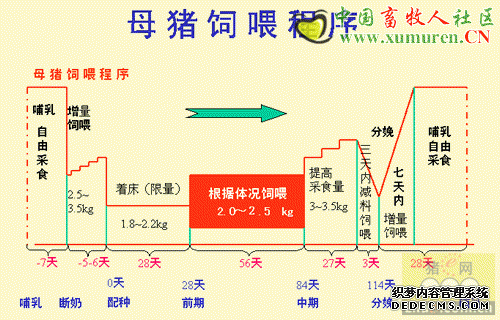By Eileen Thacker, Department of Veterinary Microbiology and Preventive Medicine, Iowa State University and published by The Pig Journal - To improve the veterinarian’s and student’s knowledge and understanding of the rapidly evolving field of immunology, Eileen Thacker has very kindly written the first in a three-part series of articles on porcine immunology.
Eileen L. Thacker
Dept. of Veterinary Microbiology Preventive Medicine Associate Professor
Extracted from
The Pig Journal,
Vol 52
Order your
copy nowThe series will comprise:Immunology ?the innate immune systemLymphocyte development and maturationImmune system抯 response to pathogens and its role in disease
Part 1: Immunology - The innate immune system
The immune response to pathogens and antigens is efficient, yet complicated. The goal of this 3 part series is to refresh your knowledge on how the immune system works, in addition to introducing you to new concepts. Immunology is a dynamic field. New knowledge of how this system protects the body against foreign invaders and yet does not destroy itself (usually) is being determined constantly.
As our ability to measure the immune response at both the cellular and molecular level increases, we begin to recognize how successful pathogens evade and circumvent the immune response in order to replicate and survive. Understanding the immune system and its response to a pathogen is required to develop successful intervention strategies for controlling and potentially eliminating the problematic pathogens we encounter in the field.
The two primary immune responses to micro-organisms and their antigens are generated by the innate and acquired or adaptive immune systems. Originally it was thought that these two systems functioned independently of each other. However, it is increasingly apparent that the two immune systems interact intimately. The two immune systems fulfill the different needs of the host to control micro-organisms.
The adaptive immune response is a specific response against a particular pathogen or antigen, lymphocytes are the primary effector cells, a memory response is generated, and the response increases with each exposure to the antigen.
The innate system is not as specific in its recognition of foreign antigens and organisms, has a number of different effector cells and molecules, and the response does not increase with repeated exposure.
The cells of the immune system originate in the bone marrow. The primary cell types include the myeloid cells; monocytes, macrophages, dendritic cells, neutrophils, eosinophils, and basophils and lymphocytes, of which there are two major types, the B and T lymphocytes.
Lymphocytes are the primary cell type of the adaptive immune response and will be discussed in more detail later. Lymphocytes mature in either the bone marrow (B cells) or thymus (T cells), which are known as primary lymphoid organs. The actual immune responses to antigens occur in the peripheral, or secondary lymphoid organs. The secondary lymphoid organs consist of lymph nodes, spleen, Peyer抯 patches and various mucosal associated lymphoid tissues.
In the secondary lymphoid tissues, cells of the innate immune system trap antigens and present them to the lymphocytes that are constantly circulating through the lymphoid tissues. Lymphocytes are na飗e until they encounter their specific antigen, after which they differentiate into the various effector cells capable of responding to their pathogen.
In most species, lymphocytes enter into the secondary lymphoid organs through the blood, circulate through the organ and if they do not encounter the appropriate antigen, leave through the lymphatic vessels. This circulation pattern is reversed in the pig, where the lymphocytes enter into the lymphoid organs through the lymphatic vessels and exit directly into the blood.
Figure 1: Response to Invading Microorganisms by innate and adaptive immune systems
声明
来源:互联网
本文地址:http://farm.00-net.com/yz/zhu/5/2007-09-18/142183.html








